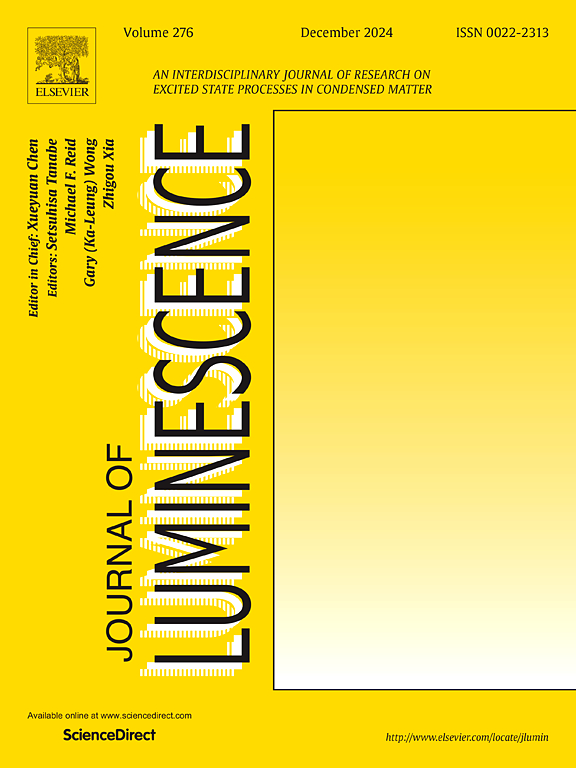未掺杂GaN中的红色发光带
IF 3.6
3区 物理与天体物理
Q2 OPTICS
引用次数: 0
摘要
在极富ga条件下通过分子束外延生长的未掺杂GaN的光致发光(PL)显示出一条亮红色带,其最大值为1.7 ~ 1.8 eV,称为RL2带。当温度从17 K增加到100 K时,该波段的PL寿命降低了两个数量级以上。相比之下,稳态PL强度在该温度区域保持不变。提出了一种接近导带的两个激发态和高于价带约1ev的深给体基态的跃迁模型。供体被鉴定为含有氮空位和未知受体杂质的复杂缺陷。本文章由计算机程序翻译,如有差异,请以英文原文为准。
Red luminescence band in undoped GaN
Photoluminescence (PL) from undoped GaN grown by molecular beam epitaxy in extremely Ga-rich conditions shows a bright red band with a maximum at 1.7–1.8 eV, named the RL2 band. The PL lifetime of this band decreases by more than two orders of magnitude with increasing temperature from 17 to 100 K. In contrast, steady-state PL intensity remains unchanged in this temperature region. A model of transitions is proposed with two excited states close to the conduction band and the ground state of the deep donor at about 1 eV above the valence band. The donor is identified as a complex defect containing a nitrogen vacancy and an unknown acceptor impurity.
求助全文
通过发布文献求助,成功后即可免费获取论文全文。
去求助
来源期刊

Journal of Luminescence
物理-光学
CiteScore
6.70
自引率
13.90%
发文量
850
审稿时长
3.8 months
期刊介绍:
The purpose of the Journal of Luminescence is to provide a means of communication between scientists in different disciplines who share a common interest in the electronic excited states of molecular, ionic and covalent systems, whether crystalline, amorphous, or liquid.
We invite original papers and reviews on such subjects as: exciton and polariton dynamics, dynamics of localized excited states, energy and charge transport in ordered and disordered systems, radiative and non-radiative recombination, relaxation processes, vibronic interactions in electronic excited states, photochemistry in condensed systems, excited state resonance, double resonance, spin dynamics, selective excitation spectroscopy, hole burning, coherent processes in excited states, (e.g. coherent optical transients, photon echoes, transient gratings), multiphoton processes, optical bistability, photochromism, and new techniques for the study of excited states. This list is not intended to be exhaustive. Papers in the traditional areas of optical spectroscopy (absorption, MCD, luminescence, Raman scattering) are welcome. Papers on applications (phosphors, scintillators, electro- and cathodo-luminescence, radiography, bioimaging, solar energy, energy conversion, etc.) are also welcome if they present results of scientific, rather than only technological interest. However, papers containing purely theoretical results, not related to phenomena in the excited states, as well as papers using luminescence spectroscopy to perform routine analytical chemistry or biochemistry procedures, are outside the scope of the journal. Some exceptions will be possible at the discretion of the editors.
 求助内容:
求助内容: 应助结果提醒方式:
应助结果提醒方式:


